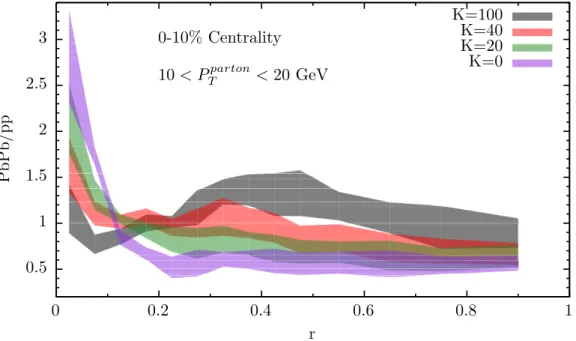Angular structure of jet quenching within a hybrid strong/weak coupling model
Texte intégral
Figure



![Figure 5. Left: ratio of the jet shape in PbPb collisions to that in proton-proton collisions for different values of the broadening parameter K as compared to CMS data from heavy ion collisions with √ s = 2.76 ATeV [51] and 0-10% centrality (left) or 10-3](https://thumb-eu.123doks.com/thumbv2/123doknet/14004765.456279/19.892.128.771.127.315/collisions-collisions-different-broadening-parameter-compared-collisions-centrality.webp)
Documents relatifs
For precision measurements, like the top mass determination, the purpose of the ATLAS experiment is to know the absolute jet energy scale at a level of 1%.. Using only
Scaling limit, disorder relevance, weak disorder, pinning model, random polymer, universality, free energy, critical curve, coarse-graining.... UNIVERSALITY FOR THE PINNING
We determine, and discuss, the first scaling law enabling the determination of the top jet drop size as a function of the corresponding mother bubble radius and the liquid
The shell model results seem to indicate that the second alternative holds since weak coupling charac- teristics are preserved, in spite of the fact thatcouplings do not
Espe- cially the pure water jet simulations, which give good agree- ment with the fit, show that without a random distribution of abrasive masses nor a velocity gradient in the
Evolution of the cap temperature with the energy dissipated on the discharge It appears clearly than discharge created by the ISP heat hardly the actuator, consequently it is
First on figure 4, for case a. and case b, a target area is selected around the droplet where modification will occurs. For figure 4 a., on image 2, the VOF inside of the droplet,
Applying the same method to a sample of fully simulated Monte Carlo events, the estimated P S values are shown to reproduce well the fractions of a correct charge assignment, P gen ,





